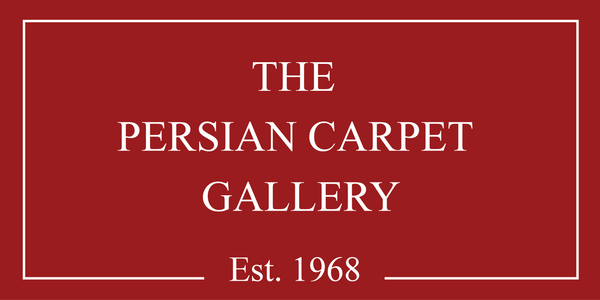Blogs
A Rare Persian Kilim from the Mausoleum of Sheikh Safi al-Din
his 17th-century Persian kilim, housed in the Iran Bastan Museum in Tehran, originates from the mausoleum of Sheikh Safi al-Din in Ardebil. Unlike traditional kilims, it lacks slits, showcasing advanced craftsmanship. The design features two large vases filled with flowers, enclosed in an arabesque, with floral embellishments across the field. The border is adorned with elongated cartouches and interwoven medallions. Reflecting Safavid-era artistry, this kilim is a testament to Persian weaving heritage. Persian Carpet Gallery offers a curated collection of authentic Persian kilims and rugs for enthusiasts and collectors alike.
Silk Kilim from the Thyssen-Bornemisza Collection, Lugano
The Silk Kilim from the Thyssen-Bornemisza Collection in Lugano, Switzerland, is a rare 17th-century Safavid-era Persian kilim from Kashan, Central Persia. Also known as the Figdor Kilim, it is a tapestry-woven masterpiececrafted with silk and silver-threaded silk weft, measuring 197 x 129 cm (78 x 51 inches).
This exquisite kilim features elongated medallions filled with intricate animal motifs, some depicting animals in dynamic interactions. The surrounding arabesque border enhances its elegance, distinguishing it from other Kashan kilims. Considered one of the earliest Safavid kilims, it showcases advanced Persian weaving techniques and reflects the artistic excellence of the Safavid dynasty.
Now housed in the Thyssen-Bornemisza Collection, this silk kilim remains a priceless artifact, representing the pinnacle of historical Persian textile artistry.
Silk Kilim: 17th-Century Persian Masterpiece at the Textile Museum, Washington, D.C.
The Silk Kilim at the Textile Museum, Washington, D.C., is a rare 17th-century Persian tapestry-woven rug from Kashan or Isfahan. Made with a silk warp and silk and gold/silver weft, it showcases exceptional craftsmanship with 112 warp threads per 10 cm. Its intricate design features a phoenix and dragon in combat, cranes in flight, and mythical kylins, alongside various animals in its borders. Similar pieces exist in Berlin's Islamisches Museum and the Metropolitan Museum of Art, New York. Textile expert M.S. Dimand attributes it to an Isfahan workshop, highlighting the rich Persian weaving heritage.
Kashan's 17th-Century Silk Kilim
The 17th-century Silk Kilim from Kashan is a remarkable Persian textile masterpiece, now housed in the Österreichisches Museum für angewandte Kunst (MAK), Vienna. Woven entirely from silk, this exquisite kilim showcases the exceptional craftsmanship of Kashan’s artisans during the Safavid dynasty. Its intricate design, resembling a Persian miniature painting, features delicate floral patterns, human figures, and winged motifs. As one of the finest examples of Persian flatweave art, this kilim highlights the rich heritage of kilim weaving, which predates knotted rugs. A true testament to Persian artistic excellence, it remains an invaluable historical artifact.




